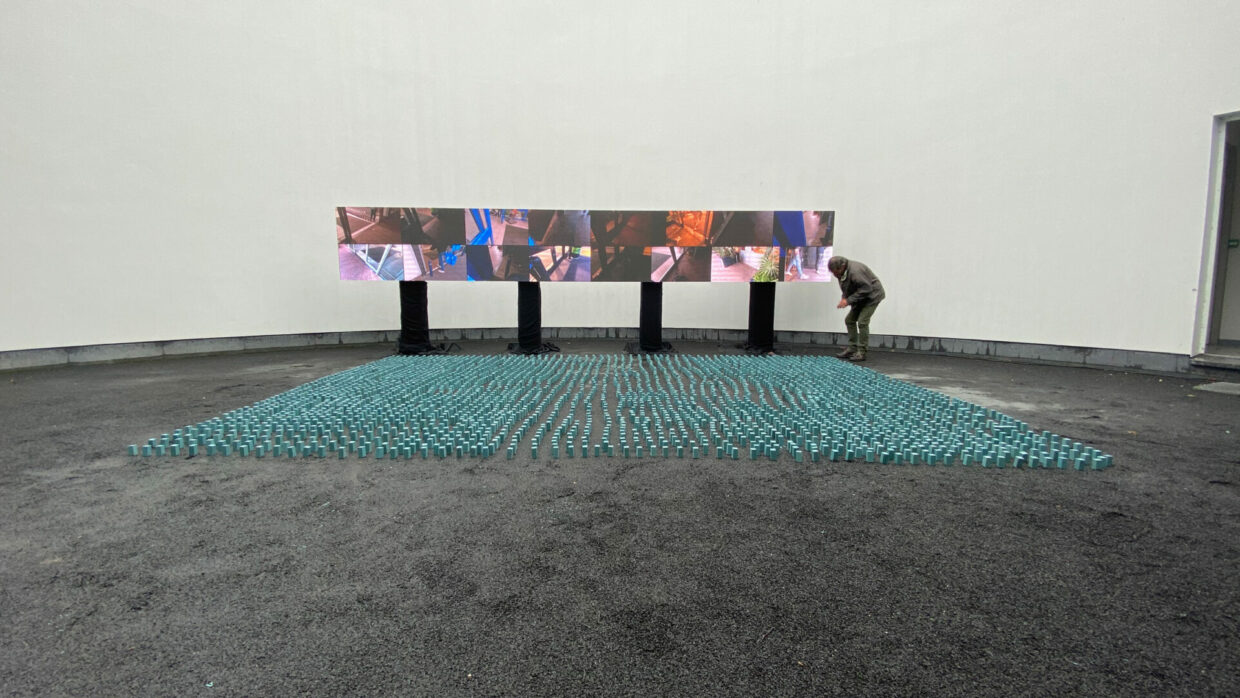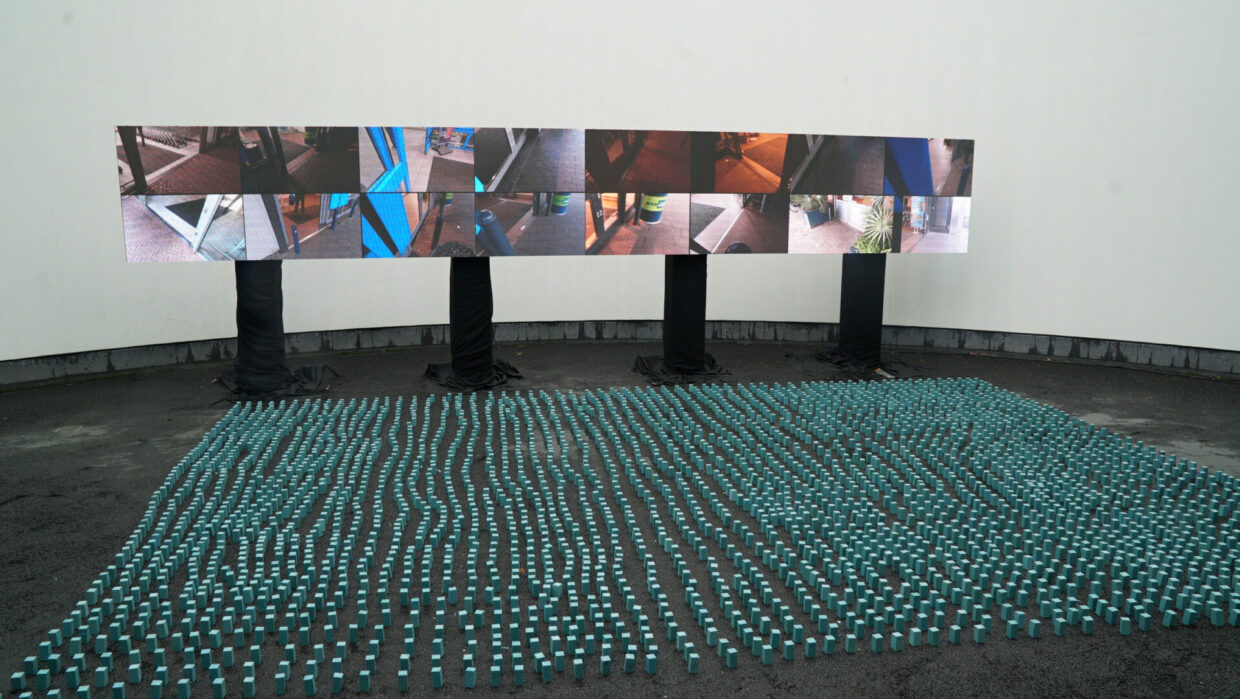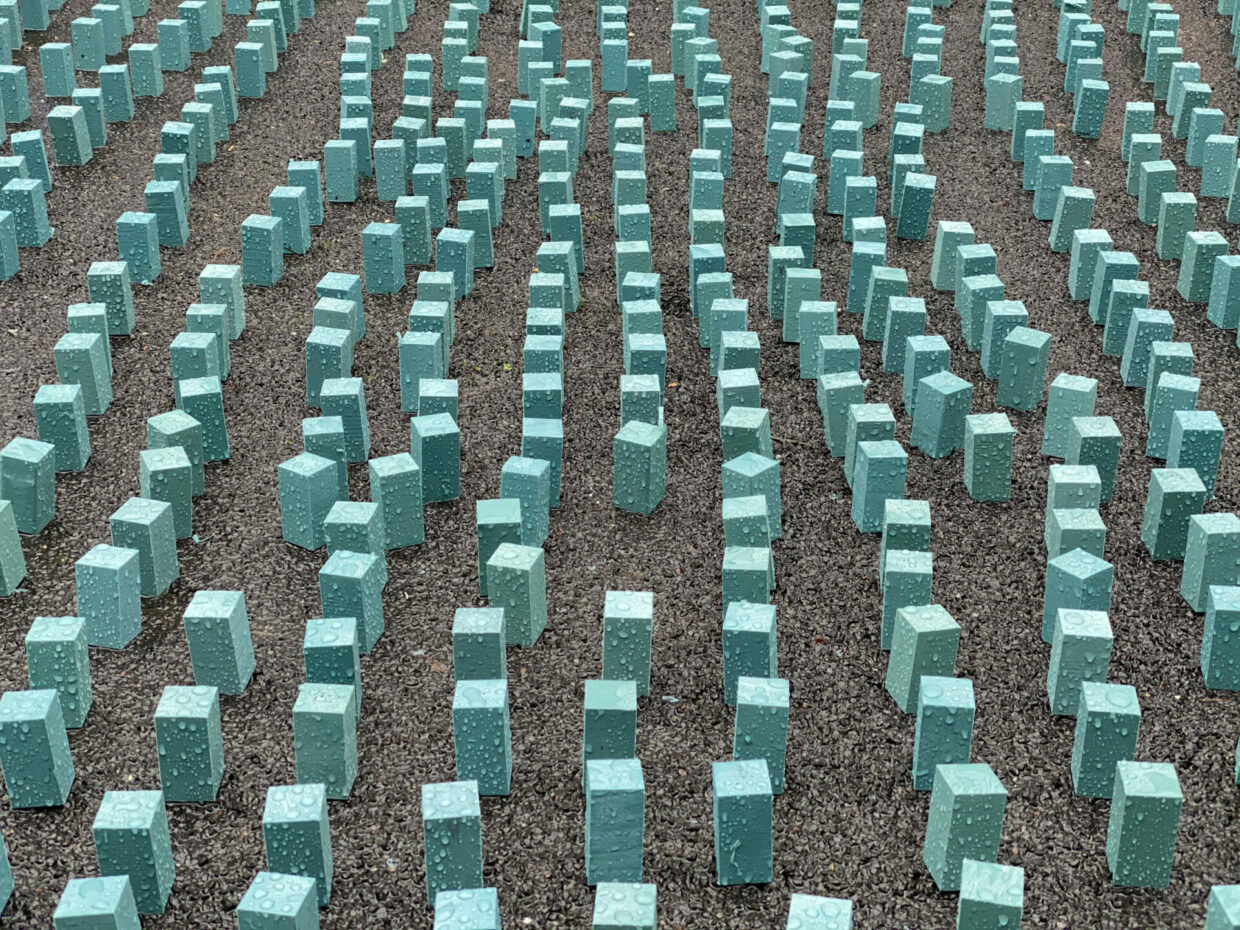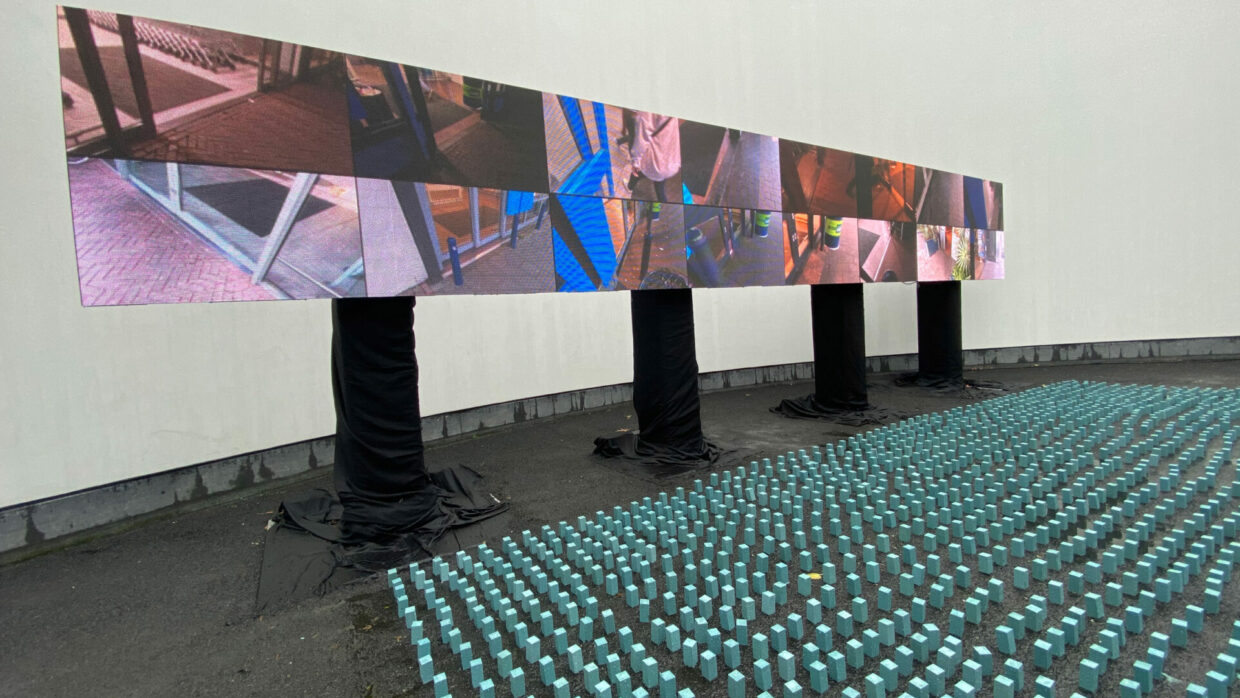Studio Drift reduces plastic bags into blocks for Materialism installation
Oct. 22, 2019
Amsterdam-based Studio Drift has created an installation of 3,000 blue blocks, which each represent the plastic used to make an individual supermarket bag, at the Van Abbemuseum for Dutch Design Week.
Materialism: The bag project is an installation on display in the Eye, a semicircular, outdoor gallery-space paved with gravel, and visible from the lower-ground floor of the Eindhoven museum.
It consists of 3,000 blue plastic blocks that were placed on the ground by volunteers, a few centimetres apart, to form a sea of blue cuboids.
Studio Drift founders Lonneke Gordijn and Ralph Nauta also participated in placing the blocks, in a performance piece that took place last Sunday.
Each block represents the exact quantity of plastic used to make a shopping bag for Albert Heijn, the iconic Dutch supermarket. Together the assembled blocks create a “three-dimensional index of consumption”.
As they have throughout the Materialism series, the studio makes manifest in physical form the amount of a given material that makes up an everyday object.
By doing so, they aim to draw attention to the resources required to make items that we take for granted.
“We are all becoming more aware of the amount of plastic we use. But usually people only hear the hard data,” the studio explained. “We want people to also physically feel the amount of materials we use.”
Behind the grid of blocks, a curved screen shows sixteen simultaneous films that depict every customer leaving an Albert Heijn store in Eindhoven with a plastic shopping bag over the course of one day.
The video installation doesn’t show the faces of the shoppers, focusing instead on the rhythmic movement of the supermarket doors as they open and close to allow customers to leave holding plastic bags.
Studio Drift hopes that the abstracted clips will “demonstrate our habit of laziness” when it comes to plastic bags.
By: Augusta Pownall
Other objects that Gordijn and Nauta have “de-produced” as part of their long-running series include a pencil, a lightbulb and even a Volkswagen Beetle car.
The constituent parts of each item are transformed into regular rectangular blocks and arranged as a piece of art.
The designers drew inspiration for the display of the geometric blocks from the abstracted works of 20th-century artists Piet Mondrian and Kazimir Malevich.
The plastic blocks that form the Van Abbemuseum installation are being sold in the museum’s gift shop during Dutch Design Week. Any profit generated will be donated to Dave Hakkens’ Precious Plastic project.
Studio Drift was established by Nauta and Gordijn in 2006, following their graduation from the Design Academy Eindhoven. Based in Amsterdam, its work explores the boundaries between nature and technology.
Well-known pieces by the studio include their Dandelights – table lamps with a light filament inside delicate seed hangs – and Franchise Freedom, a choreographed swarm of drone lights, that recently won the lighting design of the year award at Dezeen Awards 2019.
Studio Drift were amongst the ambassadors for Dutch Design Week 2019, along with founder of Eindhoven’s BioArt Laboratory Jalila Essaïdi, design critic Alice Rawsthorn and architect Stefano Boeri.
The studio’s Shylights were also on display during the design week in an installation at the recently renovated Domusdela, a former church that has been repurposed as a hotel and cultural centre.
Source: Dezeen




